Censorship Industrial Complex
Another Mass Grave?
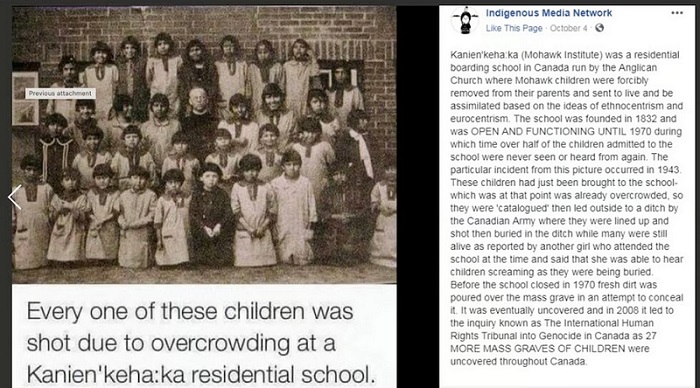
No. One outrageous lie was quickly discounted, yet another lives on, to the detriment of everybody involved.
From the Frontier Centre for Public Policy
The Kamloops claim didn’t come out of the blue. The TRC’s well-publicized “missing children” wild goose chase thoroughly indoctrinated indigenous communities. It convinced foolish people, like Casimir, Leah Gazan and Kimberley Murray, that thousands of “missing children” had been secretly buried all across Canada.
“My brother Rufus saw them take all those children and stand them up next to a big ditch, and then the soldiers shot them all and they all fell into that ditch. Some of the kids were still alive and they just poured the dirt in on top of them. Buried them alive.”
This mass murder happened in 1943 — not in Nazi-held Europe, but in Brantford, Ontario.
So, there you have it — the personal story of a residential school “survivor” describing the day the Canadian Army lined up 43 Indian children in front of a residential school at Brantford, Ontario, shot them and dumped their bodies into a mass grave. The May 27, 2021 announcement that the remains of 215 former students of the Kamloops residential school wasn’t the first time that a claim about sinister residential school deaths and clandestine burials had been made.
This Brantford story is obviously untrue. Any reasonably well-informed person with a lick of sense would know that at a glance.
But that didn’t stop the claim from making the social media rounds for years. According to the fact-check tens of thousands of people have read this bogus claim over the years, and many appear to have believed it completely. In fact, despite the fact checks proving that the claim was entirely false it continues to circulate today.
Both the Kamloops and Brantford claims came basically from the same place — the strange mind of a defrocked United Church Minister, Kevin Annett. It was Annett who created the bogus Brantford claim. In a strange twist, the picture at the top of the page — said to be from Brantford — is actually a photo of the former Kamloops Indian Residential School, as it looked in the 1920s.
And it was Annett who inspired the TRC’s misguided “missing children/unmarked graves” wild goose chase that, in turn, inspired Chief Rosanne Casimir to make the Kamloops claim. Both claims were equally and obviously false: The Kamloops claim was that the “remains of 215 children were found.” In fact, only radar blips (anomalies) were detected- blips that turned out. to most likely be from previous excavations, and not graves. Casimir and Annett both knew that they were making false claims.
Annett’s bogus claims come from his imaginative reworking of stories of “survivors” that he publicized in his blogs, books, interviews and movies.
His most famous movie is Unrepentant. This movie has been viewed by tens of thousands of Canadians, particularly in indigenous communities, such as the Tk’emlups community at Kamloops.
It has won awards, and been praised by eminent people, such as Noam Chomsky. Despite being every bit as false as the claim that the Canadian army shot 43 indigenous children, it actually convinced Member of Parliament, Gary Merasty, that it was accurate history. It is nothing short of amazing that this highly suggestible MP was then able to convince the equally gullible, and newly appointed TRC commissioners that there were many thousands of such “missing children”, as Annett alleged.
The TRC commissioners then launched their “missing children/unmarked graves” campaign despite having no mandate from the federal government to do so. (Independent researcher, Nina Green, describes this in detail here.)
You see, the Kamloops claim didn’t come out of the blue. The TRC’s well-publicized “missing children” wild goose chase thoroughly indoctrinated indigenous communities. It convinced foolish people, like Casimir, Leah Gazan and Kimberley Murray, that thousands of “missing children” had been secretly buried all across Canada.
Indigenous people became hooked on these stories.
Annett’s most famous book is his 393 page opus, “Hidden No Longer.” That book introduced the idea that the deaths of these thousands of “missing children” (his estimates range from 50,000 to 250,000, depending on the telling) constituted genocide. It is absolutely shocking that our MPs actually voted to condemn Canada of genocide based essentially on Kevin Annett’s bogus claims.
Based on those same bogus claims Annett was hired by the Brantford Mohawk community in 2011 to dig up the graves that he claimed existed in the apple orchard area of their residential school. According to Annett, these were the graves of indigenous students who had been secretly killed and buried in the apple orchard at the school, with the forced help of fellow students.
Sound familiar? It should. That was essentially the same grisly tale repeated by Chief Rosanne Casimir years later in Kamloops. (See above.)
Except that the wiser folks within the Brantford Mohawk community twigged on to Annett’s tricks. And when Annett was found on the streets of Toronto, waving around chicken bones, and pretending that they were the bones of children he had unearthed at Brantford, the Mohawk elders came together and publicly denounced Annett as a fraud at a community meeting. They then banished him from their community.
Unfortunately, Casimir became a useful idiot for Annett — just as the gullible TRC commissioners did — and no such leadership has yet come forward from the wiser elements within the Kamloops indigenous community. Those folks are silent, while the more vocal contingent are still sticking to their story that the soil anomalies are the “remains of 215 children,” and not what they almost certainly are — 1924 septic excavations.
So, the questions should be asked: Is the claim that the Canadian army shot 43 indigenous children, and dumped them in a mass grave, any more or less believable than the claim that priests killed and secretly buried 215 children at Kamloops, (or any of the copycat claims that followed it?)
What is it about that Mohawk claim that gives it appeal to only the most gullible among us, while the equally improbable Kamloops claim is still taken seriously by so many people?
On the surface, both claims are outrageous, and have no real evidence to support them. Quite the contrary, every Canadian history book ever written is cogent evidence that both stories are false. But the Mohawk claim was dismissed as the nonsense it obviously was, while the Kamloops claim lives on.
At least part of the answer to those questions appears to be in the response of the government in power, and the media to the claims. If the Brantford claim had been met by a prime minister who immediately ordered that flags be lowered, and offered hundreds of millions of dollars to any other indigenous communities who wanted to make similar claim, no doubt that Brantford claim would have been taken seriously.
Or, if the Brantford claim had been made in a time when a highly ideological CBC would ask no questions, and blindly promote the claim, the results might have been entirely different. As it is, the Brantford claim died a merciful death, while the equally specious Kamloops genocide claim still languishes like a stinking albatross around the neck of every Canadian.
Although the international community is increasingly broadcasting the obvious fact that the Kamloops claim is bogus Canada’s media remains asleep. That is not likely to change until leadership changes in Ottawa, and at the CBC. Pierre Pollievre, when questioned on this topic, stated clearly that he stands for historical truth, accuracy, and a full investigation into all questions pertaining to claims about residential school deaths. Hopefully, that means that excavation and a full inquiry will follow.
But Tk’emlups indigenous elders better wake up, like the Mohawk elders did. You are not doing your communities a favour by letting politicians and journalists treat you like children, by pretending to believe your bizarre claims. These false claims are already doing great damage.
Fortunately, there are many thoughtful indigenous people who do not blindly accept the claims about murderous priests and secret burials.
Here is one such wise indigenous person. He is a priest, and he is willing to do what our federal government and our CBC failed to do from the beginning namely to intelligently discuss the issue.
Thoughtful people like this need to be involved in a full investigation that will clear the air about the Kamloops claim, and get Canada back on track.
Brian Giesbrecht, retired judge, is a Senior Fellow at the Frontier Centre for Public Policy.
Censorship Industrial Complex
School Cannot Force Students To Use Preferred Pronouns, US Federal Court Rules
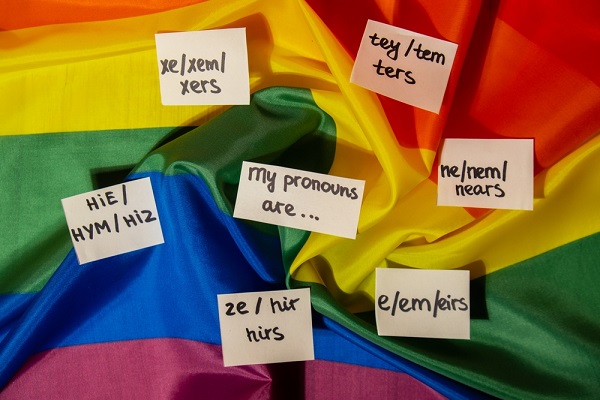

From the Daily Caller News Foundation
“Our system forbids public schools from becoming ‘enclaves of totalitarianism.’”
A federal appeals court in Ohio ruled Thursday that students cannot be forced to use preferred pronouns in school.
Defending Education (DE) filed the suit against Olentangy Local School District (OLSD) in 2023, arguing the district’s anti-harassment policy that requires students to use the “preferred pronouns” of others violates students’ First Amendment rights by “compelling students to affirm beliefs about sex and gender that are contrary to their own deeply held beliefs.” Although a lower court attempted to shoot down the challenge, the appeals court ruled in a 10-7 decision that the school cannot “wield their authority to compel speech or demand silence from citizens who disagree with the regulators’ politically controversial preferred new form of grammar.”
Because the school considers transgender students to be a protected class, students who violated the anti-harassment policy by referring to such students by their biological sex risked punishments such as suspension and expulsion, according to DE.
Dear Readers:
As a nonprofit, we are dependent on the generosity of our readers.
Please consider making a small donation of any amount here.
Thank you!
“American history and tradition uphold the majority’s decision to strike down the school’s pronoun policy,” the court wrote in its opinion. “Over hundreds of years, grammar has developed in America without governmental interference. Consistent with our historical tradition and our cherished First Amendment, the pronoun debate must be won through individual persuasion, not government coercion. Our system forbids public schools from becoming ‘enclaves of totalitarianism.’”
OLSD did not respond to the Daily Caller News Foundation’s request for comment.
“We are deeply gratified by the Sixth Circuit’s intensive analysis not only of our case but the state of student First Amendment rights in the modern era,” Nicole Neily, founder and president of DE, said in a statement. “The court’s decision – and its many concurrences – articulate the importance of free speech, the limits and perils of public schools claiming to act in loco parentis, and the critical role of persuasion – rather than coercion – in America’s public square.”
“Despite its ham-fisted attempt to moot the case, Olentangy School District was sternly reminded by the 6th circuit en banc court that it cannot force students to express a viewpoint on gender identity with which they disagree, nor extend its reach beyond the schoolhouse threshold into matters better suited to an exercise of parental authority,” Sarah Parshall Perry, vice president and legal fellow at DE, said in a statement. “A resounding victory for student speech and parental rights was long overdue for families in the school district and we are thrilled the court’s ruling will benefit others seeking to vindicate their rights in the classroom and beyond.”
Censorship Industrial Complex
How the UK and Canada Are Leading the West’s Descent into Digital Authoritarianism
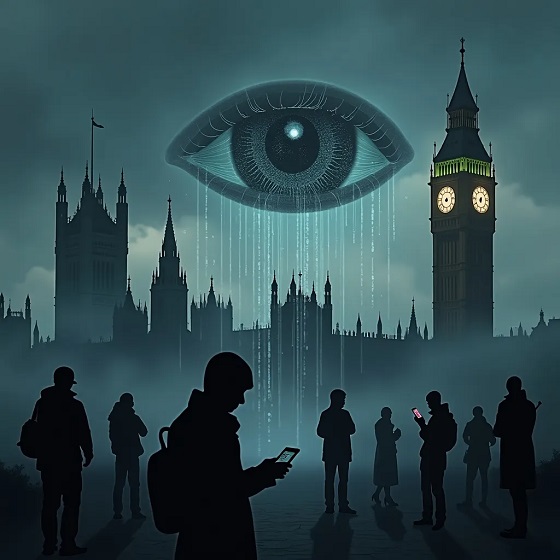
“Big Brother is watching you.” These chilling words from George Orwell’s dystopian masterpiece, 1984, no longer read as fiction but are becoming a bleak reality in the UK and Canada—where digital dystopian measures are unravelling the fabric of freedom in two of the West’s oldest democracies.
Under the guise of safety and innovation, the UK and Canada are deploying invasive tools that undermine privacy, stifle free expression, and foster a culture of self-censorship. Both nations are exporting their digital control frameworks through the Five Eyes alliance, a covert intelligence-sharing network uniting the UK, Canada, US, Australia, and New Zealand, established during the Cold War. Simultaneously, their alignment with the United Nations’ Agenda 2030, particularly Sustainable Development Goal (SDG) 16.9—which mandates universal legal identity by 2030—supports a global policy for digital IDs, such as the UK’s proposed Brit Card and Canada’s Digital Identity Program, which funnel personal data into centralized systems under the pretext of “efficiency and inclusion.” By championing expansive digital regulations, such as the UK’s Online Safety Act and Canada’s pending Bill C-8, which prioritize state-defined “safety” over individual liberties, both nations are not just embracing digital authoritarianism—they’re accelerating the West’s descent into it.
The UK’s digital dragnet
The United Kingdom has long positioned itself as a global leader in surveillance. The British spy agency, Government Communications Headquarters (GCHQ), runs the formerly-secret mass surveillance programme, code-named Tempora, operational since 2011, which intercepts and stores vast amounts of global internet and phone traffic by tapping into transatlantic fibre-optic cables. Knowledge of its existence only came about in 2013, thanks to the bombshell documents leaked by the former National Security Agency (NSA) intelligence contractor and whistleblower, Edward Snowden. “It’s not just a US problem. The UK has a huge dog in this fight,” Snowden told the Guardian in a June 2013 report. “They [GCHQ] are worse than the US.”
Following that, is the Investigatory Powers Act (IPA) 2016, also dubbed the “Snooper’s Charter,” which mandates that internet service providers store users’ browsing histories, emails, texts, and phone calls for up to a year. Government agencies, including police and intelligence services (like MI5, MI6, and GCHQ) can access this data without a warrant in many cases, enabling bulk collection of communications metadata. This has been criticized for enabling mass surveillance on a scale that invades everyday privacy.
Recent expansions under the Online Safety Act (OSA) further empower authorities to demand backdoors in encrypted apps like WhatsApp, potentially scanning private messages for vaguely defined “harmful” content—a move critics like Big Brother Watch, a privacy advocacy group, decry as a gateway to mass surveillance. The OSA, which received Royal Assent on October 26, 2023, represents a sprawling piece of legislation by the UK government to regulate online content and “protect” users, particularly children, from “illegal and harmful material.” Implemented in phases by Ofcom, the UK’s communications watchdog, it imposes duties on a vast array of internet services, including social media, search engines, messaging apps, gaming platforms, and sites with user-generated content forcing compliance through risk assessments and hefty fines. By July 2025, the OSA was considered “fully in force” for most major provisions. This sweeping regime, aligned with global surveillance trends via Agenda 2030’s push for digital control, threatens to entrench a state-sanctioned digital dragnet, prioritizing “safety” over fundamental freedoms.
Elon Musk’s platform X has warned that the act risks “seriously infringing” on free speech, with the threat of fines up to £18 million or 10% of global annual turnover for non-compliance, encouraging platforms to censor legitimate content to avoid punishment. Musk took to X to express his personal view on the act’s true purpose: “suppression of the people.”

In late September, Imgur (an image-hosting platform popular for memes and shared media) made the decision to block UK users rather than comply with the OSA’s stringent regulations. This underscores the chilling effect such laws can have on digital freedom.
The act’s stated purpose is to make the UK “the safest place in the world to be online.” However, critics argue it’s a brazen power grab by the UK government to increase censorship and surveillance, all the while masquerading as a noble crusade to “protect” users.
Another pivotal development is the Data (Use and Access) Act 2025 (DUAA), which received Royal Assent in June. This wide-ranging legislation streamlines data protection rules to boost economic growth and public services but at the cost of privacy safeguards. It allows broader data sharing among government agencies and private entities, including for AI-driven analytics. For instance, it enables “smart data schemes” where personal information from banking, energy, and telecom sectors can be accessed more easily, seemingly for consumer benefits like personalized services—but raising fears of unchecked profiling.
Cybersecurity enhancements further expand the UK’s pervasive surveillance measures. The forthcoming Cyber Security and Resilience Bill, announced in the July 2024 King’s Speech and slated for introduction by year’s end, expands the Network and Information Systems (NIS) Regulations to critical infrastructure, mandating real-time threat reporting and government access to systems. This builds on existing tools like facial recognition technology, deployed extensively in public spaces. In 2025, trials in cities like London have integrated AI cameras that scan crowds in real-time, linking to national databases for instant identification—evoking a biometric police state.

Source: BBC News
The New York Times reported: “British authorities have also recently expanded oversight of online speech, tried weakening encryption and experimented with artificial intelligence to review asylum claims. The actions, which have accelerated under Prime Minister Keir Starmer with the goal of addressing societal problems, add up to one of the most sweeping embraces of digital surveillance and internet regulation by a Western democracy.”
Compounding this, UK police arrest over 30 people a day for “offensive” tweets and online messages, per The Times, often under vague laws, fuelling justifiable fears of Orwell’s thought police.
Yet, of all the UK’s digital dystopian measures, none has ignited greater fury than Prime Minister Starmer’s mandatory “Brit Card” digital ID—a smartphone-based system effectively turning every citizen into a tracked entity.
First announced on September 4, as a tool to “tackle illegal immigration and strengthen border security,” but rapidly the Brit Card’s scope ballooned through function-creep to envelop everyday essentials like welfare, banking and public access. These IDs, stored on smartphones containing sensitive data like photos, names, dates of birth, nationalities, and residency status, are sold “as the front door to all kinds of everyday tasks,” a vision championed by the Tony Blair Institute for Global Change— and echoed by Work and Pensions Secretary Liz Kendall MP in her October 13 parliamentary speech.
Source: TheBritishIntel
This digital shackles system has sparked fierce resistance across the UK. A scathing letter, led by independent MP Rupert Lowe and endorsed by nearly 40 MPs from diverse parties, denounces the government’s proposed mandatory “Brit Card” digital ID as “dangerous, intrusive, and profoundly un-British.” Conservative MP David Davis issued a stark warning, declaring that such systems “are profoundly dangerous to the privacy and fundamental freedoms of the British people.” On X, Davis amplified his critique, citing a £14m fine imposed on Capita after hackers breached pension savers’ personal data, writing: “This is another perfect example of why the government’s digital ID cards are a terrible idea.” By early October, a petition opposing the proposal had garnered over 2.8 million signatures, reflecting widespread public outcry. The government, however, dismissed these objections, stating, “We will introduce a digital ID within this Parliament to address illegal migration, streamline access to government services, and improve efficiency. We will consult on details soon.”
Canada’s surveillance surge
Across the Atlantic, Canada’s surveillance surge under Prime Minister Mark Carney—former Bank of England head and World Economic Forum board member—mirrors the UK’s dystopian trajectory. Carney, with his globalist agenda, has overseen a slew of bills that prioritize “security” over sovereignty. Take Bill C-2, An Act to amend the Customs Act, introduced June 17, 2025, which enables warrantless data access at borders and sharing with U.S. authorities via CLOUD Act (Clarifying Lawful Overseas Use of Data Act) pacts—essentially handing Canadian citizens’ digital lives to foreign powers. Despite public backlash prompting proposed amendments in October, its core—enhanced monitoring of transactions and exports—remains ripe for abuse.
Complementing this, Bill C-8, first introduced June 18, 2025, amends the Telecommunications Act to impose cybersecurity mandates on critical sectors like telecoms and finance. It empowers the government to issue secret orders compelling companies to install backdoors or weaken encryption, potentially compromising user security. These orders can mandate the cutoff of internet and telephone services to specified individuals without the need for a warrant or judicial oversight, under the vague premise of securing the system against “any threat.”
Opposition to this bill has been fierce. In a parliamentary speech Canada’s Conservative MP Matt Strauss, decried the bill’s sections 15.1 and 15.2 as granting “unprecedented, incredible power” to the government. He warned of a future where individuals could be digitally exiled—cut off from email, banking, and work—without explanation or recourse, likening it to a “digital gulag.”
Source: Video shared by Andrew Bridgen
The Canadian Constitution Foundation (CCF) and privacy advocates have echoed these concerns, arguing that the bill’s ambiguous language and lack of due process violate fundamental Charter rights, including freedom of expression, liberty, and protection against unreasonable search and seizure.
Bill C-8 complements the Online Harms Act (Bill C-63), first introduced in February 2024, which demanded platforms purge content like child exploitation and hate speech within 24 hours, risking censorship with vague “harmful” definitions. Inspired by the UK’s OSA and EU’s Digital Services Act (DSA), C-63 collapsed amid fierce backlash for its potential to enable censorship, infringe on free speech, and lack of due process. The CCF and Pierre Poilievre, calling it “woke authoritarianism,” led a 2024 petition with 100,000 signatures. It died during Parliament’s January 2025 prorogation after Justin Trudeau’s resignation.
These bills build on an alarming precedent: during the COVID era, Canada’s Public Health Agency admitted to tracking 33 million devices during lockdown—nearly the entire population—under the pretext of public health, a blatant violation exposed only through persistent scrutiny. The Communications Security Establishment (CSE), empowered by the longstanding Bill C-59, continues bulk metadata collection, often without adequate oversight. These measures are not isolated; they stem from a deeper rot, where pandemic-era controls have been normalized into everyday policy.
Canada’s Digital Identity Program, touted as a “convenient” tool for seamless access to government services, emulates the UK’s Brit Card and aligns with UN Agenda 2030’s SDG 16.9. It remains in active development and piloting phases, with full national rollout projected for 2027–2028.
“The price of freedom is eternal vigilance.” Orwell’s 1984 warns we must urgently resist this descent into digital authoritarianism—through petitions, protests, and demands for transparency—before a Western Great Firewall is erected, replicating China’s stranglehold that polices every keystroke and thought.
If you find value in the work I do, please consider a paid subscription or make a one-off donation.
-

 Business1 day ago
Business1 day agoCarney shrugs off debt problem with more borrowing
-
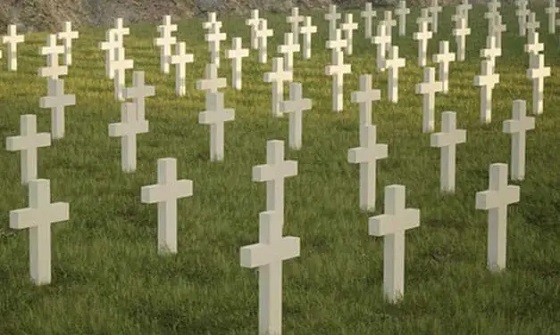
 armed forces2 days ago
armed forces2 days agoWhy we keep getting Remembrance Day wrong
-

 armed forces15 hours ago
armed forces15 hours agoCanadian veteran says she knows at least 20 service members who were offered euthanasia
-

 Alberta15 hours ago
Alberta15 hours agoHow economic corridors could shape a stronger Canadian future
-
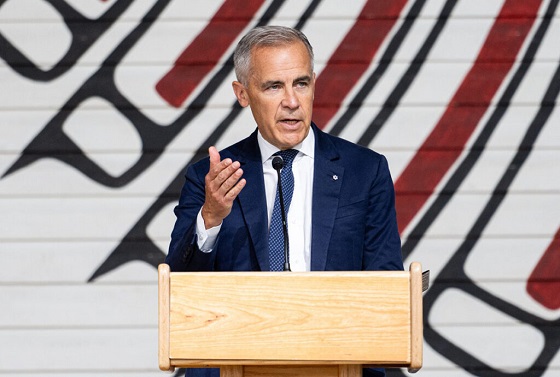
 Alberta2 days ago
Alberta2 days agoMark Carney Has Failed to Make Use of the Powerful Tools at His Disposal to Get Oil Pipelines Built
-

 MAiD1 day ago
MAiD1 day agoQuebec has the highest euthanasia rate in the world at 7.4% of total deaths
-

 Business4 hours ago
Business4 hours agoSluggish homebuilding will have far-reaching effects on Canada’s economy
-

 Crime2 days ago
Crime2 days agoCBSA Bust Uncovers Mexican Cartel Network in Montreal High-Rise, Moving Hundreds Across Canada-U.S. Border










